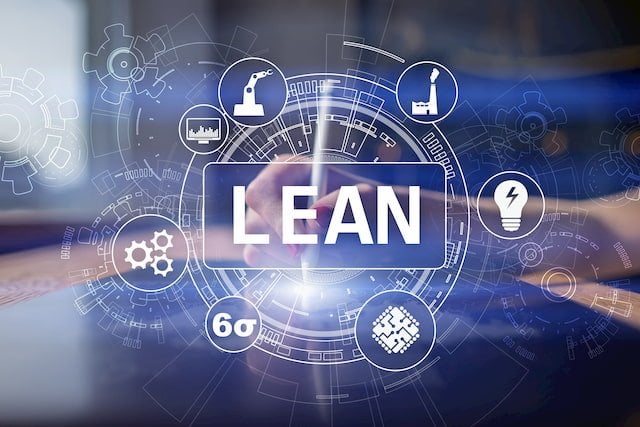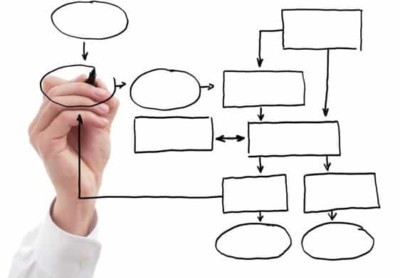The global response to the Coronavirus has impacted all of us. The need for continuous improvement persists, and one may argue is even more important during challenging times. How can we use lean tools during this time?
Greg Thompson
Recent Posts
Lean Through COVID-19: Adapting Lean Tools To Changing Times
Posted by Greg Thompson on Aug 11, 2020 11:52:22 AM
How to Implement Standard Work in a Covid-19 Environment
Posted by Greg Thompson on Jun 18, 2020 2:12:37 PM
Coauthored by Rick Wrinkler and Greg Thompson.
Standard work means determining and documenting the ideal process to produce correct and consistent results. It represents the best sequence and the most efficient methods to perform a process. It is considered a way to achieve the highest possible degree of consistency in any process. The purpose is to ensure that everything is done by everyone in a similar manner and carry out the work that achieves the highest quality, best service, and lowest cost possible.
In the world of Lean Manufacturing, this definition and adherence to Standard Work has resulted in positive, repeatable results in a variety of industries. In today’s Covid-19 environment, practitioners with years of experience in industry strongly believe that Standard Work will and should be one of the foundational tools to develop, implement, and maintain strategies to combat the Coronavirus in a manufacturing environment.
A Practical Guide to Value Stream Mapping - Part 5, with Full E-Book
Posted by Greg Thompson on May 3, 2019 8:57:14 AM
Current State vs. Future State VSM
Current State is intended to represent conditions that are present today. Not ideal conditions or how it is supposed to be, but as close to reality as possible. Future State should be your goal, your blueprint, your roadmap; this is your destination. It should be optimistic, but not unrealistic. We generally plan for a timeframe of 6 – 12 months to get to Future State. There are times an interim map is drawn, which I often call “Current State with kaizens.” Kaizen is the Japanese translation for ‘good change’. The interim map with the kaizens can be a bit messy, but it helps represent the transition from Current State to Future State. There are times when the Future State isn’t structurally different than the Current State, and the Future State is the Current State with kaizens.
A Practical Guide to Value Stream Mapping - Part 4 of 5
Posted by Greg Thompson on May 2, 2019 8:22:00 AM
Can I facilitate the VSM myself, or should I use an outside resource?
Short answer: Sure. You probably can facilitate it yourself; and should if you’re comfortable with it. VSM isn’t rocket science. But, depending on your level of experience with lean / VSM and company dynamics, there may be advantages to using an outside resource.
A Practical Guide to Value Stream Mapping - Part 3 of 5
Posted by Greg Thompson on May 1, 2019 8:06:00 AM
Suppliers and Customers
Most Value Stream Maps have multiple suppliers and customers. Some have several hundred. You generally can’t put them all on a map, so you want to focus on the most important few.
I once worked with an aerospace supplier who could count their customers on one hand; in this case they were included individually on the VSM. Sometimes the scope is such that we have a single, internal customer. Other times, we have many customers which can be represented as a generic “Customers” or perhaps we consider the Warehouse or Distributors to be the customer…or a combination of these.
A Practical Guide to Value Stream Mapping - Part 2 of 5
Posted by Greg Thompson on Apr 30, 2019 8:39:02 AM
Where to start / Granularity
At what level should we map? I’ve done VSMs where an entire factory (a big one, making lawn tractors) was merely a box on the map. Our focus was on logistics and distribution- we included inventory, capacity, and setup time in the factory box, but that was about it. On the other end of the spectrum, I’ve done VSMs for an Order Entry process. We got into much greater detail and discussed when/how credit approvals were done, etc. The level you go to really depends on your goals and scope of the VSM. If I were taking a first crack at VSM, I’d start door-to-door in a process, using major activities as my process boxes. If you find that one or more of these process boxes are real issues or need a better depth of understanding, you can complete a follow-up VSM on that process which includes more detail.
A Practical Guide to Value Stream Mapping - Part 1 of 5
Posted by Greg Thompson on Apr 29, 2019 11:21:00 AM
I don’t claim to know everything about Value Stream Mapping (VSM). However, I have used VSM extensively over the past 15 years in many different industries and situations. I believe strongly in the value of the tool and want to share some of my experience with the intention of helping novice Continuous Improvement leaders head in the right direction with VSM.










